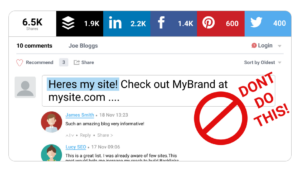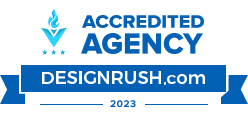Among SEO strategies, link-building remains an effective tool for success in today’s competitive digital marketplace. Link building helps businesses drive more website traffic and increase rankings on search engine results pages (SERPs). However, link building also carries some risks if not done right – from potentially incurring penalties from search engines to decreasing your online reputation.
In navigating these complexities, partnering with a link building specialist can be instrumental. These experts employ a more ethical, white hat approach, ensuring your link-building efforts are both effective and aligned with best SEO practices.
This blog post will explore successful strategies for link-building as well as helping you identify pitfalls to steer clear of when formulating your own link-building plan. Armed with this knowledge, you will be better equipped to take full advantage of the potential marketing opportunities of good quality links!
Understanding Link Building
You might have heard about links (or backlinks) that can help you to rank higher in SERPs. However, building links is more complex than it sounds. The following sections will help you better understand this.
What Is Link Building?
Link building is an SEO process that aims to increase the quality and number of inbound links from external sites. The more high-quality backlinks a webpage has, the higher it can rank in the results pages. This contributes to SEO efforts and the overall visibility of a website.
Search engines consider backlinks the “vote of confidence” of the website getting the links. Each vote suggests your content is valuable, credible, and useful, all contributing to establishing website authority.
Higher domain authority has a higher chance of ranking in SERPs and improved website visibility. PageRank, a Google algorithm that determines how to rank pages, looks at the number of links to a website to determine the website’s importance. The theory behind this is that if something is important or useful, more websites will link. The more links, the more trustworthy the website is.
Some common link-building strategies include guest blogging, outreach, and broken link-building.
Why Is Link Building Important, and What Does It Mean for Marketers?
For marketers and business owners, link-building helps build relationships with other businesses or bloggers in your industry. By collaborating with others for backlinks, you can increase your chances of generating new leads or customers by expanding the network and reaching a wider audience.
When marketers are well-versed in the scope of the link-building process, they can initiate their own link-building campaigns. However, it’s important to note that not all link-building campaigns pave the path to success. It’s a complex process fraught with potential challenges. The journey towards effective link-building is often a mix of wins and fails.
Get Ahead with These Link Building Real Life Wins
After understanding the basics of link-building, you might be keen to know how some businesses have gone about it successfully. I will discuss some approaches to the so-called “wins” in link-building.
Building High-Quality Backlinks from Authority Websites
Backlinks from authoritative websites are high-quality, which improves the website’s visibility and establishes your brand as an authority in your industry.
Domain authority is a metric that reflects the quality and relevance of your website. Earning backlinks from high-authority sites can improve your own website’s domain authority. It signals search engines and users that your website is a reliable source of information.
Identifying authority websites for link-building opportunities requires a strategic approach. Determine the top websites and influencers in your space with high domain authority and a strong online presence using tools like Ahrefs, Moz, and SEMrush. Prioritize those that are relevant to your industry, niche, or target audience, as they carry more weight and drive targeted traffic to your site.
Crafting Compelling Guest Posts on Reputable Websites

Guest posting on reputable websites is a great way to build your brand profile, establish yourself as an authority in your industry, and attract high-quality backlinks to your website. Selecting reputable websites for guest posting is crucial for building your brand’s credibility and earning high-quality backlinks.
To create compelling guest posts that attract backlinks, research the website and its audience to tailor your content to their needs and increase the chance of your post being accepted. You should select a topic that offers unique insights or solutions to their problems.
Your guest post should be well-researched, engaging and informative. Use data, examples, and case studies to support your arguments and make your post more credible. Short paragraphs, bullet points, and images break up your content, making it easier to read. Also, use a clear and concise writing style, and proofread your post for grammar and spelling errors.
Earning Backlinks through Influencer Outreach and Collaboration
Influencers have a dedicated following audience. Collaborating with these influencers increases brand visibility and helps you reach new audiences. It can increase the likelihood of gaining relevant, high-quality backlinks. More than a third of marketers cite influencer collaborations as providing the highest ROI of any channel. Backlinks shared by established influencers can indicate expertise and trustworthiness, enhancing your brand’s credibility and providing social proof.
To build relationships with influencers in a particular industry, show support and build rapport through liking, commenting, and sharing their posts. You may get their attention by mentioning them on social media and conversing with them. Look for opportunities to work together on joint ventures and provide influencers with unique and useful content that they might be able to share with their followers.
Creating Link-Worthy Content Assets
Providing valuable content assets increases the visibility and exposure of your website. It will build authority and credibility across your industry, which entices other authoritative websites to link to your website, increasing your search engine rank.
An evergreen content remains relevant and valuable over time. It increases the chance of being shared and linked for months or even years after publication. In addition to quality content, these increase backlinks as they are considered link-worthy content assets.
Using HARO for Link-building and PR Opportunities
Help a Reporter Out, or HARO connects journalists and bloggers with sources for their stories. HARO is a great platform for building backlinks and establishing your brand as an expert in your industry.
To effectively utilize HARO, ensure that you craft compelling responses to queries within the deadline given. Be concise in answering the question, and avoid giving irrelevant information. Provide valuable insights and avoid blatant self-promotion. If they find your response insightful and useful, they may naturally include a backlink to your website in their article. Don’t request for backlinks explicitly, as this may put off journalists and bloggers.
Utilizing Social Channels to Drive Links

Social media for businesses helps in promoting content and attracting backlinks. Utilizing different social channels increases the chances of your content being shared and linked to a wider audience. According to Authority Hacker’s survey among 755 link builders, social media gains an additional 22% of links per month.
Your social media profiles should be complete, up-to-date, and consistent across all platforms. Use relevant keywords in your bio with a link to your website. Respond to comments and ask questions to engage with your audience. Sharing valuable content regularly that resonates with them to encourage link-sharing.
Applying Skills and Personality Traits for Link Building
Successful link building requires more than just technical knowledge and strategies; a set of skills and personality traits contributes to effective relationship building with other website owners and marketers. You must effectively communicate your ideas, proposals, and requests to others not only in written communication but also in verbal communication through email or phone calls. Practice active listening and empathetic communication to better understand and connect with others.
Establishing trust and rapport with other website owners and marketers takes time, especially if you are approaching them for the first time. You need patience in your follow-ups and waiting for a response or a backlink. The results of your link-building efforts might take a long time to be seen, so keep going.
To develop these skills and traits, you can join communication workshops or seminars and practice regularly in real-life scenarios. You can also seek mentorship from experienced link builders to learn effective communication strategies and build patience through persistence.
Why Many Link-Building Campaigns Fail?
Despite the potential benefits of link building, many SEO professionals, marketers, and business owners fail because some lack understanding of what link building is, and they tend to come up with these common missteps to avoid, as follows…
Black Hat Link Building Practices
Black hat link-building practices include buying links, link farms, and keyword stuffing. These practices seem like a quick and easy way to improve your website’s rankings. However, they often result in severe consequences like penalties, loss of reputation, and even banning, as they violate search engine guidelines and attempt to manipulate the search engine results artificially.
How to avoid it?
Focus on white hat SEO – a more ethical and sustainable manner of doing SEO to avoid these risks and consequences. Focus on creating informative, engaging, and relevant content to attract natural backlinks, and use keywords naturally and sparingly in your content.
Excessive Link Exchanges or Reciprocal Linking

Excessive link exchanges or reciprocal linking with other websites in the hopes of boosting each other’s rankings is an outdated and ineffective link-building strategy. Google considers this to be a form of manipulating PageRank, which can result in a penalty. This penalty can lead to a drop in search engine visibility, lost opportunities, and decreased traffic.
How to avoid it?
Instead of trying to exchange links, invest your time in creating a user-friendly website with exceptional, highly valuable content that people will naturally want to link to and share. These links are more valuable and can significantly improve your website’s rankings in the long run.
Neglecting the Importance of Link Relevance and Context
Backlinks from irrelevant websites may seem like a quick way to increase the number of links to your website. However, it can be harmful as search engines consider relevance and context when evaluating link quality.
How to avoid it?
Contextual links are those that are placed within the body of relevant content, surrounded by useful information. Ensure they are relevant to the content they are placed in and provide value to the reader. Avoid websites and categories that are completely unrelated to your industry or topic, as zero relevance can harm your website’s credibility and search engine ranking.
Neglecting the Power of Internal Linking
Internal linking is often overlooked. It connects pages within your website to help search engine crawlers better understand the site structure. Internal links allow users to spend more time on your site as they navigate through your website and discover related content.
Neglecting internal linking can result in missed opportunities to enhance website visibility and improve user navigation, as well as a loss in potential backlinks from your own content.
How to avoid it?
Make sure to strategically include internal links within your website’s content. Use relevant anchor texts to link to related pages or blog posts. You can also use tools like Ahrefs and Google Search Console to identify missed internal linking opportunities and improve your internal linking strategy.
Over-Optimizing Your Anchor Text
Anchor text is the hyperlinked text that leads to a link. Over-optimizing anchor text involves using exact-match keywords and phrases repeatedly within your content, which can trigger search engine penalties and negatively impact your website’s rankings.
How to avoid it?
Use relevant and descriptive anchor text for the target page. Keep your anchor text brief and succinct, ideally five words or less, and use a mix of different anchor text types to sound more natural.
Building Spammy Backlinks from Blog Comments
Building spammy backlinks from blog comments involves posting irrelevant comments with links to a website in discussion forums, blog comments, guest books, or any place online that allows commenting. These comments are often automated using software that places large numbers of irrelevant comments on blogs, often using exact match anchor text. This tactic is associated with toxic links and can quickly get out of control if it isn’t moderated.

How to avoid it?
Leave helpful and insightful comments on other blogs to entice new readers to your own blog and build relationships with other bloggers. Use your real name rather than a keyword as anchor text for a link to your site. Don’t use blog comments to improve your backlink profile in any manner.
Not Analyzing Your Competitors Links
When you don’t analyze your competitors’ links, you miss out on valuable insights into where your competitors are getting their backlinks from. It can lead to ineffective link-building efforts on your part, as you’ll essentially be shooting in the dark without any concrete data or strategies to guide you. You might over-invest in low-quality links while missing out on high-value opportunities that your competitors are capitalizing on.
How to avoid it?
Conduct a comprehensive competitor backlink analysis to identify potential opportunities and understand your competitors’ link-building strategies. Use tools like Ahrefs, SEMrush, or Majestic to analyze the quality and relevance of these links, and use this data to inform your own link-building strategy. Keep monitoring your competitors’ backlinks regularly to stay updated on their latest efforts and adjust your strategy accordingly.
Using the Wrong Link-Building Strategies
Low-quality or spammy link-building can damage a website’s credibility and reputation among its audience and industry peers, leading to a loss of trust and respect from potential customers. It can also result in penalties, causing your website to be removed from search results altogether.
How to avoid it?
Stay informed and updated with industry trends and best practices for link building. Choose strategies aligned with your goals to gain high-quality backlinks – guest blogging, creating valuable and shareable content, and building relationships with other websites in your industry. Always focus on quality over quantity in obtaining backlinks.
How to Measure Success in Link Building
Link-building campaigns can be time-consuming and require resources, which is why it is important to track the effectiveness of link-building efforts to ensure that your investments are bringing in tangible results.
Some key metrics to measure when tracking the success of link-building campaigns include:
Domain Authority: Domain Authority predicts how well a website ranks on search engine result pages. Backlinks from high-authority websites can improve your domain authority, leading to increased visibility and higher rankings.
Organic Traffic Growth: Organic traffic refers to the number of visitors that come to your website through organic search results. An increase in organic traffic can indicate that your link-building efforts are driving more visibility and awareness for your website.
Referral Traffic: Referral traffic indicates the number of visitors who come to your website through other websites. Monitoring referral traffic can help you understand the impact of your link-building efforts on driving traffic to your site.
Here are some case studies that show success in link-building:
Outreach Monks had difficulty ranking highly competitive keywords, so they needed to create a strategy to rank on those keywords. Their strategy is to make high-quality content and use content marketing outreach to build high backlinks. It resulted in an increase of traffic in 6 months of about 10x more. Also, they were able to improve domain rating from 50 to 70 – higher authority.

Ahrefs also made a case study in building backlinks with a ‘statistic page’. They choose statistic pages, which tend to have many links and are often outdated. Their entire process involves finding a winning topic and linking prospects, writing and sending outreach emails.

With the 515 emails sent, their conversion rate is 5.71% – 27 websites linked back, some linked more than once. Also, five sites weren’t contacted but linked to them. Overall, their campaign gained 36 links from 32 websites.
Conclusion
Link building should be an integral part of any website’s digital marketing strategy. When done right, it can bring a wealth of aggregated, high-quality traffic and raise your web presence to the next level. However, it must be handled with care and foresight. Mismanaged link-building can be costly in terms of time, money, and reputation. Understanding the risks along the way, as well as the benefits, could mean the difference between success and failure.
To ensure some success in the link-building game, simply remember to think strategically about linking out, weigh up potential losses against potential gains, be consistently creative when developing campaigns, stay organized, monitor progress, keep up with major algorithm changes and above all else avoid shortcuts and use white-hat techniques whenever possible.
With dedication and consistency, you too can see success with link building – remember to avoid those fails or pitfalls so that you can achieve wins! Are you ready to take action now?
Author Bio:
Kevin is the CEO and founder of Aemorph. A seasoned entrepreneur and digital marketing expert. Kevin started in digital marketing, specializing in Search Engine Optimisation since 2010, and is helping Finance, Insurance, E-commerce, Medical, B2B, and SaaS companies.
Kevin is also a certified adult educator in Singapore, delivering high-quality, relevant, and easy-to-implement training to ensure learners can get immediate results and build upon their knowledge. He’s currently building Mint Superteams with a mission to train 1 million people and place them into companies.



